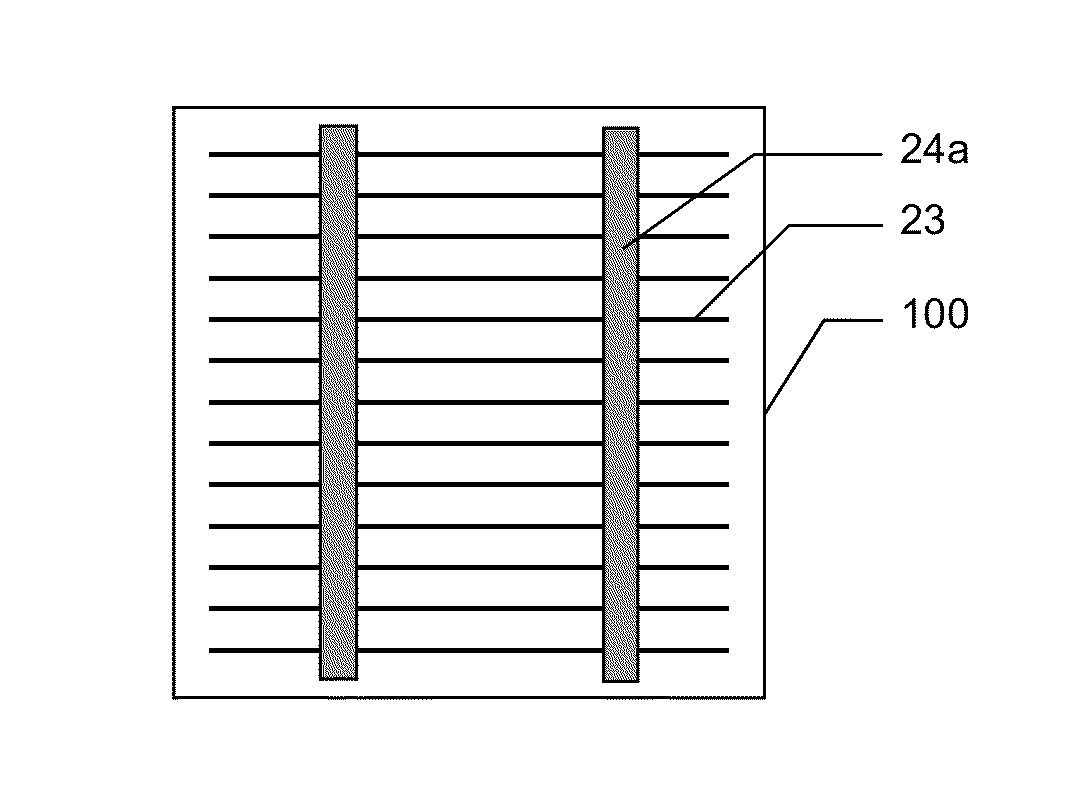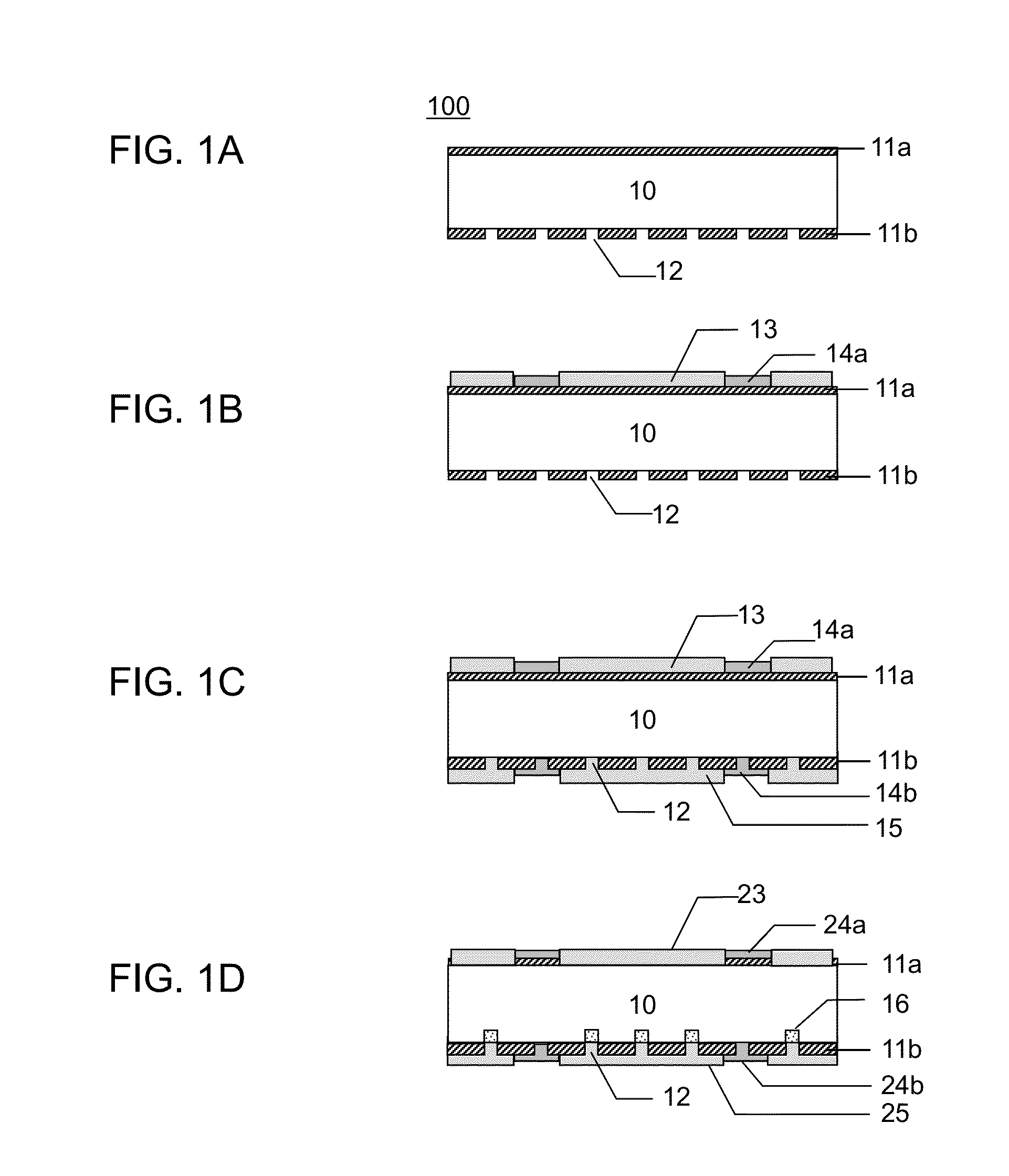Method of manufacturing thick-film electrode
a manufacturing method and electrode technology, applied in the direction of non-conductive materials with dispersed conductive materials, metal/alloy conductors, conductors, etc., can solve the problem of poor solder adhesion of thick-film electrodes with insufficient thickness
- Summary
- Abstract
- Description
- Claims
- Application Information
AI Technical Summary
Benefits of technology
Problems solved by technology
Method used
Image
Examples
examples
[0078]The present invention is illustrated by, but is not limited to, the following examples. The thick-film electrode was formed on a semiconductor substrate having the insulating layer. The thick-film electrode in the Example was a supposed solar cell bus electrode.
Preparation of the Thick-Film Electrode
[0079]A conductive paste containing the conductive powder, the glass frit, and the organic medium was prepared by using the following materials and procedure. The amounts of the materials are shown in Table 1. Weight percent (wt %) is herein based on the total weight of the conductive paste unless otherwise mentioned.[0080]Conductive powder: spherical silver (Ag) powder with particle diameter (D50) of 1.1 μm in average.[0081]Glass frit: Pb—B—Si glass frit with softening point (Ts) 465° C.[0082]Organic polymer: Ethylcellulose[0083]Solvent: Terpineol
[0084]The Ag powder and the glass frit were dispersed into the mixture of ethylcellulose and terpineol and mixed for 15 minutes to form ...
PUM
| Property | Measurement | Unit |
|---|---|---|
| thickness | aaaaa | aaaaa |
| diameters | aaaaa | aaaaa |
| thick | aaaaa | aaaaa |
Abstract
Description
Claims
Application Information
 Login to View More
Login to View More - R&D
- Intellectual Property
- Life Sciences
- Materials
- Tech Scout
- Unparalleled Data Quality
- Higher Quality Content
- 60% Fewer Hallucinations
Browse by: Latest US Patents, China's latest patents, Technical Efficacy Thesaurus, Application Domain, Technology Topic, Popular Technical Reports.
© 2025 PatSnap. All rights reserved.Legal|Privacy policy|Modern Slavery Act Transparency Statement|Sitemap|About US| Contact US: help@patsnap.com



